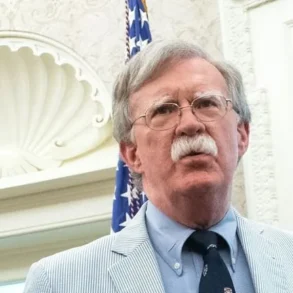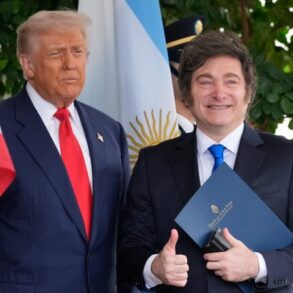The U.S. Treasury Department has unveiled a draft design for a $1 commemorative coin featuring President Donald Trump to celebrate the 250th anniversary of American independence in 2026. While the design is not yet finalized, it has sparked both interest and debate due to its bold imagery and legal implications.
Coin Design and Symbolism
The proposed coin’s obverse (heads) side showcases President Trump’s profile, with the word “Liberty” above and “1776-2026” below, marking the semiquincentennial of the United States’ Declaration of Independence. The reverse (tails) side depicts Trump with a raised clenched fist, an American flag in the background, and the words “fight, fight, fight” emblazoned over the image. This design references Trump’s words after surviving an assassination attempt in Pennsylvania last year, symbolizing resilience and determination.
U.S. Treasurer Brandon Beach shared the preliminary design on social media, stating, “No fake news here. These first drafts honoring America’s 250th Birthday and @POTUS are real.” A Treasury spokesperson emphasized that the design is not final but reflects “the enduring spirit of our country and democracy, even in the face of immense obstacles.”
Legal Debate Surrounding the Coin
The proposed coin has raised questions about its legality. Federal law prohibits the depiction of living current or former presidents on U.S. currency, a rule historically in place to avoid the appearance of a monarchy, according to the Federal Reserve Bank of San Francisco. However, this restriction primarily applies to paper currency produced by the Bureau of Engraving and Printing. Commemorative coins, like the proposed $1 coin, are minted by the U.S. Mint, which operates under different regulations.
A 2021 law authorizes the Treasury to issue $1 coins for the nation’s 250th anniversary, and a 2020 law specifies that these coins cannot feature a “head and shoulders portrait or bust” of any person, living or dead, on the reverse side. The Trump coin’s reverse design, which shows a wider illustration of the president, appears to comply with this rule, according to legal experts. Additionally, laws prohibiting living persons on certain $1 coins apply specifically to coins honoring U.S. presidents, not those minted for other purposes, such as this anniversary celebration.
Historical Context
The U.S. Mint has a history of issuing commemorative coins for significant national milestones. For the 1976 bicentennial, the Treasury held a national competition, selecting a design featuring the Liberty Bell and the moon on one side and former President Dwight D. Eisenhower, who died in 1969, on the other. The Trump coin would mark a departure from tradition, as it features a living president, a choice that has fueled public debate on social media.
In contrast, the U.S. Mint recently issued commemorative quarters featuring five deceased women—Ida B. Wells, Juliette Gordon Low, Dr. Vera Rubin, Stacey Park Milbern, and Althea Gibson—highlighting the agency’s practice of honoring notable figures posthumously.
What’s Next?
The Treasury has not finalized the $1 coin design, and further details are expected once ongoing government challenges, including a potential shutdown, are resolved. When asked if President Trump had seen the draft, White House spokeswoman Karoline Leavitt remarked, “I’m not sure if he’s seen it, but I’m sure he’ll love it.”
As the nation approaches its 250th anniversary, the proposed Trump coin represents a bold and controversial choice to commemorate America’s milestone. Whether it becomes the final design remains to be seen, but it has already sparked conversations about tradition, legality, and the enduring symbols of American democracy.








